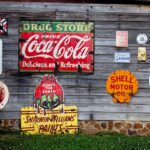Designing effective PPC landing pages is a meticulous blend of art and science, demanding a deep understanding of user psychology, conversion rate optimization (CRO) principles, and technical best practices. The objective is singular: to convert paid ad clicks into valuable actions, whether that’s a lead, a sale, a download, or a sign-up. This requires a landing page meticulously crafted to guide the user towards that specific goal, free from distractions and brimming with persuasive elements.
Fundamental Principles of High-Converting PPC Landing Pages
At the core of any successful PPC landing page lies a set of foundational principles that dictate its structure, messaging, and user experience. Ignoring these principles inevitably leads to wasted ad spend and missed opportunities.
The Single Goal Principle
Every effective PPC landing page must have one, and only one, primary conversion goal. This singular focus eliminates ambiguity for the visitor and streamlines the design process. If a page attempts to achieve multiple goals – collect an email, make a sale, and promote social media – it will likely achieve none effectively. The cognitive load on the user increases, and their path to conversion becomes muddled.
For example, if your PPC ad promotes a free eBook download, the landing page should be solely dedicated to facilitating that download. All elements, from the headline to the form fields, should push the user towards that action. Avoid including links to other product pages, blog posts, or your company’s “About Us” section. These are distractions that pull the user away from the intended conversion.
Ad-to-Landing Page Congruence
This is perhaps the most critical principle for PPC success. Congruence refers to the seamless match between your paid advertisement and the landing page it leads to. When a user clicks an ad, they have a specific expectation based on the ad copy, headline, and offer. The landing page must immediately fulfill that expectation.
Key elements of congruence include:
- Headline Match: The landing page headline should ideally echo or directly expand upon the ad’s headline. If your ad promises “50% Off All Winter Jackets,” the landing page headline should immediately confirm “Get 50% Off Your Winter Jacket Purchase Today!”
- Offer Consistency: The offer presented on the landing page must be identical to the one in the ad. Discrepancies in pricing, discount percentages, product availability, or service details will lead to immediate bounces and a loss of trust.
- Visual Consistency: Branding, color schemes, and imagery should align between the ad and the landing page. This creates a cohesive and professional experience, reinforcing brand identity and reassuring the user they’ve landed in the right place.
- Keyword Integration: If your ad was triggered by a specific keyword, ensure that keyword (or close variations) is present on the landing page, particularly in the headline and primary copy. This reassures the user that the page is highly relevant to their search query. This principle directly impacts Quality Score in platforms like Google Ads, which in turn affects ad position and cost-per-click.
Understanding Your Audience and Their Intent
Effective landing page design begins long before any design element is placed. It starts with a deep understanding of the target audience and their specific intent when clicking your ad.
- Demographics and Psychographics: Who are they? What are their pain points, desires, and motivations? What language resonates with them?
- Search Intent: Are they in the awareness, consideration, or decision stage of their buying journey? A user searching for “best project management software reviews” has different intent than someone searching for “buy Asana subscription.” Your landing page content and call to action must align with this intent.
- Pain Points and Solutions: What problem is your product or service solving for them? The landing page must clearly articulate how you alleviate their pain points and provide a superior solution.
- Objections: Anticipate potential objections or hesitations a user might have and address them proactively on the page. This could involve testimonials, FAQs, or detailed benefit explanations.
The User Journey and Funnel Alignment
A PPC landing page is a crucial step in a broader marketing funnel. Its design must consider where the user is coming from (the ad) and where you want them to go next (the conversion).
- Awareness Stage: Landing pages for awareness-focused ads might offer informational content like whitepapers or guides.
- Consideration Stage: Pages for users in consideration might offer free trials, demos, or detailed product comparisons.
- Decision Stage: These pages are typically geared towards direct purchase or contact forms for sales-qualified leads.
Each stage requires a different level of information, different types of trust signals, and a tailored call to action. Misalignment will lead to high bounce rates and low conversion rates, as the user is either overwhelmed or under-informed for their stage of the journey.
Core Elements of High-Converting Landing Pages
Once the foundational principles are established, the focus shifts to the specific components that make up a high-performing landing page. Each element plays a vital role in persuading the visitor to take the desired action.
Headline Optimization
The headline is arguably the most critical piece of copy on your landing page. It’s the first thing visitors see, and it determines whether they stay or bounce. Its primary role is to grab attention, clarify the offer, and provide a compelling reason to continue reading.
- Clarity Over Cleverness: While clever headlines can be engaging, clarity is paramount for a PPC landing page. Visitors are often scanning quickly; they need to understand the value proposition immediately.
- Match Ad Copy: As part of ad-to-landing page congruency, the headline should echo or directly build upon the promise made in the ad. This reinforces relevance and reduces cognitive dissonance.
- Highlight the Core Benefit/Offer: Don’t bury the lead. The headline should clearly state what the visitor will gain or what action they can take. Examples: “Unlock Your Free eBook on SEO Strategies,” “Get 20% Off Your First Order Now,” “Schedule Your No-Obligation Marketing Consultation.”
- Incorporate Keywords (Naturally): If the ad was triggered by a specific keyword, incorporate it into the headline or a prominent sub-headline. This instantly validates the page’s relevance to the user’s search query.
- Use Sub-Headlines for Elaboration: A strong main headline can be supported by a concise sub-headline that provides additional detail, addresses a specific pain point, or adds a secondary benefit. This creates a hierarchical structure that’s easy to scan.
- Dynamic Text Insertion (DTI): For advanced campaigns, DTI allows you to dynamically insert the user’s search query or other custom parameters directly into the landing page headline or body copy. This hyper-personalization dramatically increases relevance and can boost conversion rates. For instance, if a user searches for “blue running shoes,” your headline could dynamically become “Find Your Perfect Blue Running Shoes Here.”
Compelling Value Proposition
Beyond the headline, the entire page must articulate a clear and compelling value proposition. This answers the fundamental question in the visitor’s mind: “What’s in it for me?”
- What it is: A value proposition is a clear statement of the tangible results a customer will get from using your product/service, why those results are valuable, and how it’s different from competitors.
- Benefits Over Features: People buy solutions to problems, not lists of features. While features are important, the value proposition must translate them into tangible benefits. Instead of “Our software has X, Y, and Z features,” say “Our software helps you save 10 hours a week on X, so you can focus on Y, achieving Z results.”
- Address Pain Points: Directly acknowledge the problems or challenges your target audience faces and position your offer as the ultimate solution. Use empathy in your language.
- Differentiation: Why should they choose you over a competitor? Highlight your unique selling proposition (USP). Is it price, quality, speed, customer service, a unique feature, or something else?
- Clarity and Conciseness: The value proposition should be easy to understand at a glance, without requiring the visitor to dig for information.
Hero Section Design
The hero section is the portion of the landing page visible immediately upon arrival, without scrolling (the “above the fold” area). It’s crucial for making a strong first impression and reinforcing the ad’s message.
- Visual Hierarchy: Elements should be arranged to guide the user’s eye towards the most important information, typically the headline, value proposition, and primary call to action.
- Compelling Visuals: High-quality images or videos can convey complex information quickly and evoke emotion.
- Images: Use images that are relevant to your offer, high resolution, and ideally depict people benefiting from your product/service. Avoid generic stock photos if possible. Show, don’t just tell.
- Videos: Short, engaging videos (explainer videos, product demos, testimonials) can significantly boost engagement and conversion rates by quickly delivering information in an easily digestible format. Ensure they load quickly and are optimized for mobile.
- Minimalist Design: Avoid clutter. The hero section should be clean, focused, and free from distracting elements like complex navigation menus (which are generally removed from PPC landing pages).
- Above the Fold CTA: While not always strictly necessary for every page, placing a primary call to action (CTA) button clearly visible in the hero section is often a best practice, especially for high-intent offers.
Body Copy and Messaging
Once the hero section has captured attention, the body copy is responsible for building a persuasive argument, addressing concerns, and deepening the visitor’s understanding of the offer’s value.
- Scannability: Most users don’t read every word; they scan. Use:
- Subheadings: Break up long blocks of text and highlight key points.
- Bullet Points and Numbered Lists: Present benefits, features, or steps in an easy-to-digest format.
- Short Paragraphs: Keep paragraphs concise, typically 2-4 sentences.
- Bold Text: Emphasize important keywords or phrases.
- Persuasive Writing Techniques:
- Features, Advantages, Benefits (FAB): Start with a feature, explain its advantage, then detail the tangible benefit to the user. Example: “Our software has a built-in AI assistant (Feature), which simplifies complex tasks (Advantage), saving you hours of manual work every week (Benefit).”
- Problem-Agitate-Solve (PAS): Identify the problem your audience faces, agitate that problem by describing its negative impact, then present your solution. Example: “Tired of complicated spreadsheets? (Problem) Wasting hours every week on data entry that could be spent growing your business? (Agitate) Our intuitive CRM automates data collection, freeing up your time for strategic initiatives. (Solve)”
- Social Proof: Integrate testimonials, case study snippets, or trust logos within the copy to build credibility.
- Address Objections and FAQs: Proactively answer common questions or concerns that might prevent a conversion. A concise FAQ section can be highly effective.
- Tone and Voice: Maintain a consistent brand voice that resonates with your target audience. Is it formal, casual, authoritative, friendly, enthusiastic?
- Storytelling: Where appropriate, use short narratives or examples to illustrate how your product/service has helped others or how it will improve the user’s life. This makes the message more relatable and memorable.
- Focus on the User: Use “you” and “your” more than “we” and “our.” Frame everything in terms of the user’s needs, desires, and outcomes.
Call to Action (CTA) Optimization
The Call to Action is the lynchpin of your landing page. It’s the moment you ask the visitor to convert. A well-optimized CTA is clear, compelling, and stands out.
- Clarity and Specificity: Avoid generic CTAs like “Submit” or “Click Here.” Instead, be specific about what action the user will take and what they will get. Examples: “Get Your Free eBook,” “Start Your 14-Day Free Trial,” “Schedule a Demo,” “Shop Now,” “Download the Guide.”
- Benefit-Oriented Language: Frame the CTA in terms of the benefit the user will receive. “Unlock My Savings” is more compelling than “Redeem Coupon.”
- Urgency and Scarcity (Use Sparingly): Phrases like “Limited Time Offer,” “Only 5 Spots Left,” or “Ends Soon” can create a sense of urgency, but they must be genuine. Overuse or fake urgency can damage trust.
- Prominence: The CTA button should visually stand out from the rest of the page.
- Color: Use a contrasting color that aligns with your brand but draws the eye. Avoid colors that blend into the background.
- Size and Shape: Make the button large enough to be easily clickable, especially on mobile, but not overwhelmingly so. Rounded corners often perform well.
- Whitespace: Surround the CTA with ample whitespace to make it pop and reduce visual clutter.
- Placement: Place the primary CTA strategically where it’s easily discoverable. Common placements include:
- Above the fold in the hero section.
- After key benefit sections.
- At the bottom of the page (for longer pages).
- Consider multiple CTAs if the page is long, but ensure they all lead to the same primary action.
- Micro-CTAs: Sometimes, a smaller, secondary CTA (e.g., “Learn More” or “See Features”) can serve as a stepping stone to the main conversion, particularly for complex offers or longer sales cycles.
Trust and Credibility Signals
Building trust is paramount, especially when asking for personal information or money. Visitors are naturally skeptical, and strong trust signals can overcome this hesitation.
- Testimonials and Reviews: Authentic quotes from satisfied customers, ideally with names, photos, and even company affiliations, are incredibly powerful. Video testimonials are even more impactful.
- Case Studies: For B2B or high-value offers, detailed case studies that outline a problem, your solution, and the measurable results achieved can be highly persuasive.
- Trust Badges and Security Seals: Displaying logos from reputable security providers (e.g., SSL certificates, McAfee Secure) assures users that their data is protected, especially for forms or e-commerce transactions.
- Client Logos/Partner Logos: If you work with well-known or respected companies, display their logos. This leverages their reputation to enhance yours.
- Awards and Certifications: Any industry awards, certifications, or recognitions demonstrate expertise and credibility.
- Privacy Policy Link: A clear link to your privacy policy demonstrates transparency and assures users their data will be handled responsibly. Place this in the footer.
- Guarantees: Offering a money-back guarantee or a satisfaction guarantee can significantly reduce perceived risk and boost confidence.
- Contact Information: Providing easily accessible contact information (phone number, email) can signal legitimacy and a willingness to communicate.
- Press Mentions: If your company or product has been featured in reputable media outlets, showcase their logos or snippets of the coverage.
Lead Capture Forms
For lead generation landing pages, the form is the conversion point. Its design and optimization directly impact conversion rates.
- Form Length Optimization: Generally, shorter forms lead to higher conversion rates, as they reduce friction. Only ask for essential information. If you need more data, consider progressive profiling (collecting additional information in subsequent interactions).
- Clear Labels and Placeholder Text: Each field should have a clear, descriptive label. Placeholder text can offer examples of expected input (e.g., “john.doe@example.com”).
- Logical Flow: Group related fields together. Arrange fields in a logical order that makes sense to the user.
- Error Handling: Provide clear, immediate, and helpful error messages if a user makes a mistake. Highlight the specific field that needs correction.
- Privacy Assurances: Reiterate your commitment to privacy near the form (e.g., “We will never share your email address”). A checkbox for opting into marketing communications (if required by law) should be clear and not pre-checked.
- CTA on Form Submission Button: The submit button text should be benefit-oriented or action-oriented, not just “Submit.” (e.g., “Get Your Free Quote,” “Download Now”).
- No CAPTCHAs (If Possible): While helpful for spam, CAPTCHAs introduce friction. Explore alternative spam prevention methods first.
- Multi-Step Forms: For longer forms, breaking them into multiple steps can reduce cognitive load and make the process seem less daunting. A progress bar can indicate how far along the user is.
- Autofill Compatibility: Ensure your form fields are properly coded to allow browser autofill, speeding up the process for returning users.
- Conversion Tracking: Ensure form submissions are tracked as conversions in your analytics platform (Google Analytics, Google Ads Conversion Tracking) so you can measure performance accurately. This often involves redirecting to a thank-you page after submission or using event tracking.
Technical & Performance Optimization
Even the most compelling copy and design will fail if the landing page is slow, broken, or difficult to use. Technical performance is crucial for user experience and directly impacts Quality Score in PPC platforms.
Page Speed Optimization
Page load time is a critical factor for conversion rates and user satisfaction. A delay of even a few seconds can significantly increase bounce rates. Google and other search engines also factor page speed into their ranking algorithms and Quality Score calculations.
- Image Optimization:
- Compression: Compress images using tools like TinyPNG or Kraken.io without sacrificing visual quality.
- Correct Sizing: Serve images at the exact dimensions they will be displayed on the page to avoid unnecessary resizing by the browser.
- Next-Gen Formats: Use modern image formats like WebP, which offer superior compression to JPEG or PNG.
- Lazy Loading: Implement lazy loading so images only load when they enter the user’s viewport, speeding up initial page load.
- Minify CSS, JavaScript, and HTML: Remove unnecessary characters (whitespace, comments) from code files to reduce their size.
- Leverage Browser Caching: Configure your server to tell browsers to store static resources (images, CSS, JS) for a specified period, so returning visitors don’t have to download them again.
- Content Delivery Network (CDN): Use a CDN to serve your landing page content from servers geographically closer to your users, reducing latency.
- Reduce Server Response Time: Choose a reputable hosting provider and optimize server-side scripts and database queries.
- Minimize Redirects: Each redirect adds latency. Ensure your landing page URL is direct.
- Prioritize Above-the-Fold Content (Critical CSS/JS): Ensure that the CSS and JavaScript necessary for rendering the content above the fold load first, providing a faster perceived load time.
- Limit External Scripts: Every external script (tracking pixels, chat widgets, analytics) adds overhead. Use them judiciously and ensure they are loaded asynchronously or deferred if possible.
- Font Optimization: Use modern font formats (WOFF2) and subset fonts to only include necessary characters. Consider preloading critical fonts.
Mobile Responsiveness
With mobile devices accounting for over half of all web traffic, a mobile-first approach to landing page design is no longer optional; it’s essential. A poor mobile experience will alienate a large segment of your potential customers.
- Responsive Design Framework: Ensure your landing page template or design is built using a responsive framework that adapts fluidly to different screen sizes and orientations.
- Mobile-First Approach: Design for mobile first, then scale up for desktop. This forces you to prioritize essential content and optimize for performance from the outset.
- Touch Target Sizes: Ensure buttons and clickable elements are large enough and have sufficient spacing to be easily tapped with a finger without accidentally hitting adjacent elements. (Google recommends at least 48×48 device-independent pixels).
- Viewport Configuration: Correctly configure the viewport meta tag in your HTML to ensure proper scaling on mobile devices.
- Legible Font Sizes: Use font sizes that are easily readable on smaller screens without requiring zooming.
- Simplified Forms: Make forms easy to fill on mobile. Use appropriate input types (e.g.,
type="email",type="tel") to bring up relevant mobile keyboards. - Optimize for Speed: Mobile users are even less patient with slow loading pages than desktop users. All page speed optimization techniques are doubly important for mobile.
- Eliminate Pop-ups/Interstitials (Carefully): While some pop-ups can be effective on desktop, aggressive or poorly implemented mobile pop-ups can be detrimental to UX and penalized by search engines. If used, ensure they are easily dismissible and don’t cover the entire screen.
Tracking and Analytics
You can’t optimize what you don’t measure. Robust tracking and analytics are fundamental to understanding landing page performance, identifying bottlenecks, and informing optimization efforts.
- Google Analytics (GA4): Implement GA4 to track visitor behavior, traffic sources, time on page, bounce rate, and user flow.
- Goal Tracking: Set up conversion goals in GA4 for your primary landing page action (e.g., form submission, button click, page view for a thank-you page).
- Event Tracking: Track specific interactions on your page, such as video plays, scroll depth, or clicks on specific elements, even if they aren’t the primary conversion.
- Google Tag Manager (GTM): Use GTM to manage all your tracking tags (Google Analytics, Google Ads conversion tracking, Facebook Pixel, etc.) from a single interface without needing to modify your page’s code directly. This simplifies implementation and reduces the risk of errors.
- Google Ads Conversion Tracking: Directly integrate Google Ads conversion tracking to measure the effectiveness of your PPC campaigns at generating specific conversions. This data is critical for optimizing bids and campaign strategy.
- Heatmaps and Session Recordings (e.g., Hotjar, Crazy Egg): These tools provide visual insights into how users interact with your page.
- Heatmaps: Show where users click, scroll, and move their mouse, revealing areas of interest or confusion.
- Session Recordings: Replay individual user sessions to understand their journey, identify friction points, and see exactly what they experienced.
- User Surveys and Feedback Forms: Directly ask visitors for their feedback on their experience, what they liked, what was confusing, or why they didn’t convert. Short, non-intrusive surveys can yield invaluable qualitative data.
- A/B Testing Platform Data: Integrate data from your A/B testing platform (e.g., Google Optimize, Optimizely, Unbounce) to analyze the performance of different variations.
Advanced Strategies & Continuous Improvement
Designing an effective PPC landing page isn’t a one-time task; it’s an ongoing process of testing, learning, and refining. Advanced strategies help elevate performance and ensure sustained success.
A/B Testing and Multivariate Testing
Testing is the backbone of CRO. Without it, design decisions are based on assumptions, not data. A/B testing (or split testing) involves comparing two versions of a page (A and B) to see which one performs better for a specific metric (e.g., conversion rate). Multivariate testing (MVT) tests multiple elements on a page simultaneously to find the optimal combination.
- Formulate Clear Hypotheses: Before testing, define what you’re testing, why you think it will improve performance, and what you expect to happen. Example: “Changing the CTA button text from ‘Download Now’ to ‘Get My Free Guide’ will increase conversion rate by 10% because it focuses on the user’s benefit.”
- Test One Element at a Time (for A/B): To isolate the impact, change only one significant element between variations (e.g., headline, CTA color, image).
- Elements to Test:
- Headlines and Sub-headlines: Different value propositions, emotional appeals, specific benefits.
- Call to Action (CTA): Text, color, size, placement.
- Visual Elements: Hero images, videos, product shots, background designs.
- Body Copy: Length, tone, specific persuasive arguments, benefit emphasis.
- Forms: Number of fields, field labels, layout, privacy assurances.
- Trust Signals: Placement of testimonials, number of logos, type of security badge.
- Overall Layout: Order of sections, amount of whitespace.
- Ensure Statistical Significance: Don’t stop a test too early. Run tests long enough to gather sufficient data and achieve statistical significance, ensuring the results aren’t due to random chance. Tools will indicate when significance is reached.
- Iterative Optimization: Testing is an ongoing cycle. Implement winning variations, then use the insights gained to formulate new hypotheses for the next round of tests. Even small, incremental gains accumulate over time.
- Tools for A/B Testing: Google Optimize (free, integrates with Analytics), Optimizely, VWO, Unbounce, Leadpages often have built-in testing capabilities.
Personalization & Dynamic Content
Generic landing pages rarely achieve optimal conversion rates. Personalization tailors the content and experience to individual users or segments, making the page feel more relevant and compelling.
- Geotargeting: Display content, offers, or store locations specific to the user’s geographic location. “Find a [Service] Near You in [City, State]”
- Cookie-Based Personalization: If a user has visited your site before, you can leverage their past behavior (e.g., products viewed, pages visited) to show them relevant content or offers on subsequent visits.
- CRM Integration: For existing leads or customers, integrate your CRM data to personalize the page with their name, company, or specific needs based on their history with you.
- Content Tailored to Ad Query/Keyword: As mentioned with DTI, automatically insert the exact keyword that triggered the ad into the headline or body copy, making the page hyper-relevant to the search intent.
- Referral Source Personalization: Customize content based on where the user came from (e.g., if they clicked from a specific blog post, reference that content on the landing page).
- Demographic/Firmographic Personalization: Tailor messaging based on known attributes of the user or their company (e.g., industry, company size for B2B).
- Behavioral Personalization: Show different offers or messages based on in-session behavior, like time spent on a page, scroll depth, or exit intent.
Segmenting Audiences & Landing Page Variations
Instead of a single landing page for all PPC traffic, create multiple variations tailored to specific audience segments, ad groups, or even individual keywords.
- Ad Group Specific Pages: Each ad group in your PPC campaign should ideally point to a highly relevant landing page. If you have an ad group for “red sneakers” and another for “blue running shoes,” each should have its own corresponding landing page.
- Keyword-Specific Pages: For high-volume or high-value keywords, consider creating ultra-specific landing pages that perfectly match the user’s exact search intent.
- Different Stages of the Funnel: As discussed earlier, use distinct landing pages for users in different stages of the buying journey (awareness, consideration, decision). The offer, messaging, and CTA will vary significantly.
- Demographic/Interest-Based Segmentation: If your PPC campaigns target different demographics or interests (e.g., small businesses vs. enterprises, parents vs. students), create tailored landing pages that speak directly to their unique needs and concerns.
- Device-Specific Experiences: While responsive design is crucial, sometimes a completely different layout or content presentation is optimal for mobile users compared to desktop users, beyond just scaling.
Legal & Accessibility Considerations
Often overlooked, ensuring your landing pages are legally compliant and accessible to all users is not just good practice but often a legal requirement.
- GDPR, CCPA, and Other Privacy Regulations:
- Clear Consent: Ensure any forms collecting personal data explicitly ask for consent, especially for marketing communications, and specify how data will be used.
- Privacy Policy Link: A clear, easily accessible link to your privacy policy is mandatory.
- Data Minimization: Only collect the data absolutely necessary for the conversion goal.
- Data Subject Rights: Be prepared to handle requests for data access, correction, or deletion.
- WCAG (Web Content Accessibility Guidelines):
- Semantic HTML: Use proper HTML tags (e.g.,
,) for structure, which assists screen readers and other assistive technologies. - Alt Text for Images: Provide descriptive
alttext for all images so visually impaired users know what the image conveys. - Keyboard Navigation: Ensure all interactive elements (forms, buttons, links) are navigable and usable via keyboard alone (using Tab key).
- Color Contrast: Ensure sufficient contrast between text and background colors for readability, especially for users with visual impairments.
- Form Labels and Error Handling: Forms should have clearly associated labels, and error messages should be descriptive and easy to understand for assistive technologies.
- Transcripts/Captions for Video: Provide transcripts or closed captions for any video content to accommodate users who are hearing impaired or prefer to read.
- Accessible CTAs: Ensure CTA text is descriptive enough to be understood out of context (e.g., “Download PDF Guide” instead of just “Download”).
- Semantic HTML: Use proper HTML tags (e.g.,
Specific Landing Page Types & Use Cases
While the core principles apply broadly, the exact layout, content, and conversion goal differ significantly based on the type of offer.
Lead Generation Landing Pages
These pages are designed to capture contact information (typically email, name, phone number) in exchange for a valuable asset or service.
- Typical Offers: Free eBooks, whitepapers, webinars, consultation calls, demo requests, newsletters, free trials (for SaaS), resource guides, exclusive content.
- Key Elements:
- Clear Value Proposition: What specific problem does the lead magnet solve?
- Benefits-Oriented Copy: Focus on what the user will gain by downloading/signing up.
- Prominent Form: Often placed above the fold, kept as short as possible.
- Trust Signals: Testimonials, security badges, privacy assurances are crucial for encouraging form submission.
- No Navigation: Minimize distractions to keep focus on the form.
- Thank You Page: Redirect to a thank-you page after submission, which can also include a secondary CTA (e.g., “Follow us on social media,” “Explore our other resources”).
Product Landing Pages (E-commerce)
For e-commerce, these pages aim to drive direct product sales. They often feature specific product information.
- Typical Offers: Specific product promotions, new product launches, category sales.
- Key Elements:
- High-Quality Product Images/Videos: Multiple angles, lifestyle shots, zoom functionality.
- Clear Product Name and Price: Immediately visible.
- “Add to Cart” CTA: Prominent and clear.
- Product Description: Concise, benefit-driven description highlighting key features and their advantages.
- Customer Reviews/Ratings: Essential social proof for e-commerce.
- Availability/Stock Information: Important for urgency and managing expectations.
- Shipping & Return Information: Clear links or snippets.
- Size Guides/Specifications: If applicable.
- Payment Security Badges: Reassure customers during checkout.
- Related Products (Optional): Can increase average order value, but must be carefully placed to avoid distraction.
SaaS Trial/Demo Pages
Designed to encourage sign-ups for free trials or schedule product demonstrations for Software as a Service.
- Typical Offers: Free trial sign-up, demo request, “freemium” plan sign-up.
- Key Elements:
- Clear Value Proposition for the Software: What pain does it solve? What outcomes does it deliver?
- Benefit-Oriented Language: Focus on how the software empowers the user.
- Screenshot/Video Demo: Show the software in action.
- Key Features (with benefits): Highlight the most impactful features.
- Social Proof: Logos of clients, testimonials, user numbers (“Trusted by X,000 users”).
- Clear CTA: “Start Your Free Trial,” “Request a Demo.”
- Pricing Information (Optional but often helpful): If applicable, a clear path to understanding pricing after the trial.
- FAQs: Address common questions about the trial, onboarding, or features.
Click-Through Landing Pages
These pages don’t aim for an immediate conversion on the page itself but rather to provide more information before guiding the user to another page (e.g., a main product page, a full shopping cart, or a detailed pricing page). They act as a bridge.
- Purpose: To warm up the lead, provide more context, or segment users before a final conversion.
- Key Elements:
- Compelling Visuals and Copy: Build excitement and provide more detail than the ad.
- Strong, Clear CTA: Directs the user to the next logical step (e.g., “See Pricing Plans,” “View Full Product Catalog,” “Explore Features”).
- Minimalist Design: Still avoid distractions, but the CTA leads away from the page, not to a form on it.
- Used when: The offer is complex, requires significant education, or needs to segment users (e.g., B2B vs. B2C).
Long-Form vs. Short-Form Landing Pages
The optimal length of a landing page depends on the complexity and cost of the offer, and the user’s intent.
- Short-Form Landing Pages (Above the Fold Focus):
- Best for: Low-commitment offers (e.g., simple lead magnets, quick sign-ups, highly specific product offers for impulse buys).
- Characteristics: All critical information (headline, value prop, CTA, form) is visible without scrolling. Minimal copy.
- Pros: Lower cognitive load, faster conversions, good for mobile.
- Cons: Not suitable for complex products or high-friction offers that require more persuasion.
- Long-Form Landing Pages (Scrolling Required):
- Best for: High-commitment offers (e.g., high-ticket items, complex B2B services, comprehensive guides, software trials requiring significant understanding).
- Characteristics: Designed to tell a full story, address all objections, build extensive trust, and provide detailed information. Often includes multiple sections: problem, solution, benefits, features, testimonials, FAQs, pricing breakdown.
- Pros: Can build strong conviction, handle objections, suitable for informed buyers.
- Cons: Requires more effort from the user, needs careful design to maintain engagement (scannability, engaging visuals, multiple CTAs).
- Design Tip: Use “false bottoms” – visual cues (e.g., full-width sections, large images, prominent subheadings) that encourage scrolling by signaling more content below.
Common Pitfalls to Avoid
Even seasoned marketers can fall into common traps when designing PPC landing pages. Awareness of these pitfalls can help preempt issues and optimize performance.
- Distractions (Navigation, Too Many CTAs): The most common mistake. Full navigation menus, multiple links to other parts of your website, or competing CTAs (e.g., “Buy Now” and “Download Whitepaper” on the same page) dilute the singular focus and confuse visitors. Remove all non-essential links.
- Slow Loading Times: As discussed, a slow page kills conversions and negatively impacts Quality Score. Prioritize speed.
- Lack of Clarity/Vague Messaging: If visitors can’t immediately understand what your offer is, what problem it solves, or what they need to do, they’ll leave. Be direct, concise, and benefit-oriented. Avoid jargon.
- Poor Mobile Experience: Ignoring mobile users is akin to ignoring half your potential audience. Test your landing page thoroughly on various mobile devices and ensure it’s responsive, fast, and easy to interact with.
- Weak Value Proposition: If the page doesn’t clearly articulate “What’s in it for me?” in a compelling way, visitors won’t convert. Your offer must be perceived as valuable enough to warrant the action you’re asking for.
- Insufficient Trust Signals: In an age of skepticism, a lack of testimonials, security badges, or other credibility indicators can lead to distrust and high bounce rates. Earn your visitor’s trust.
- Not A/B Testing: Relying on intuition instead of data is a recipe for mediocrity. Without continuous testing, you’re leaving conversions on the table and won’t truly understand what resonates with your audience.
- Ignoring Ad-to-Landing Page Congruence: The disconnect between ad copy and landing page content is a significant conversion killer and Quality Score damper. Ensure a seamless transition.
- Overly Long or Complex Forms: For lead generation, asking for too much information upfront or having confusing form fields creates friction and reduces completion rates.
- Hidden or Unclear CTAs: The call to action should be prominent, unambiguous, and tell the user exactly what to do and what they’ll get. Don’t make them search for it.
- Generic Stock Photos: While convenient, generic stock photography can make your brand appear inauthentic and fail to connect with visitors on an emotional level. Invest in custom, high-quality visuals that accurately represent your brand and offer.
- No Thank-You Page or Confirmation: After a conversion, redirecting to a dedicated thank-you page not only confirms the action but also provides an opportunity for a secondary conversion (e.g., social media follow, share with a friend, explore related content) and ensures accurate conversion tracking.
- Forgetting Legal and Accessibility Requirements: Overlooking privacy policies, consent checkboxes, or accessibility standards can lead to legal penalties and alienate segments of your audience.
- Not Tracking Conversions Accurately: If you can’t precisely measure how many clicks turn into conversions, you can’t optimize your campaigns or landing pages effectively. Ensure all necessary tracking pixels and goals are correctly implemented.
- Lack of Clear Visual Hierarchy: If all elements on the page scream for attention equally, none will truly stand out. Use size, color, contrast, and placement to guide the visitor’s eye through the most important information first.
By meticulously applying these principles, optimizing every element, continuously testing, and avoiding common pitfalls, you can design PPC landing pages that consistently deliver high conversion rates, maximizing the return on your paid advertising investment.











